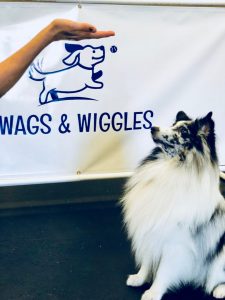 How Hand Signals Can Improve Your Dog’s Life
How Hand Signals Can Improve Your Dog’s Life
A hand signal is when you make a gesture and your dog responds by performing a certain behavior.
Dogs are pretty amazing at reading body language, and many find hand signals easier to understand than verbal cues.
Hand signals can significantly improve your dog’s quality of life for the following reasons:
- Teaching your dog hand signals will increase his or her overall focus. Dogs who understand hand signals pay more attention to their owners. They know that watching for a hand signal usually leads to reinforcement!
- Hand signals can help your dog have off-leash freedom, because hand signals are more effective than verbal cues at a distance.
- Changing an existing verbal cue to a hand signal is a fun training exercise your dog will enjoy. It’s just another way to sharpen your dog’s mind! We teach this skill in our Obedience Level 2 - High School class.
- As dogs age, it’s pretty common for them to lose their hearing. Hand signals allow deaf or hard of hearing dogs to still communicate with their owners.
- Kids and dogs both love hand signals! Teaching your children to train your dog using hand signals is a fun way to improve their relationship.
Here are some common hand signals:
- One finger point to eye - Watch Me. This cue is a great place to start and an important first step! Your dog must learn he or she needs to look to be able to watch what behavior you want them to perform. Whenever your dog looks directly at your eyes, reward him or her with a treat!
- Open hand, palm up - Sit. Sit is probably the most basic obedience cue out there. This gesture is simple – have your palm facing the sky at your chest and move your hand in an upward motion.
- Raised open hand, palm forward - Down. This cue is necessary for training your dog to settle. The action for this signal is to raise your hand and arm straight up, above your head. The hand should be flat, like a stop signal.
- Open hand, palm forward - Stay. This nonverbal command is essential for safety if you are out in public places or near busy streets. Walk backwards with your palm facing outward at the level of your chest. The release cue can be your hand signal for come.
- Hand diagonally across chest - Come. To train your dog to come, start with your hand open at your side and diagonally bring it to your opposite shoulder. If your dog is off leash, this cue is a must!
It is always important to positively reinforce your dog with verbal praise and treats during the training process. For more information about hand signals, feel free to contact us, set up a private lesson, or register for an obedience class!

Hi just wondering if you have any locations in Australia?